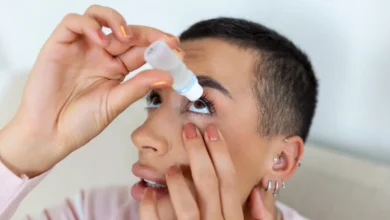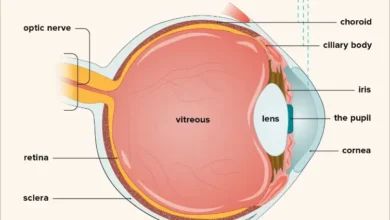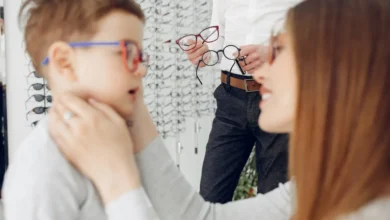Pink Eye: What Does it Look Like?
Introduction
So, your eyes are red, maybe itchy, and you’re wondering, “Do I have pink eye?” Good question. Pinkeye, or conjunctivitis, is ubiquitous and contagious. Spotting the signs early can help you avoid spreading it and get relief faster. But what exactly does pink eye look like, and how can you tell what type you’re dealing with?
Let’s break it all down in a clear, simple way.
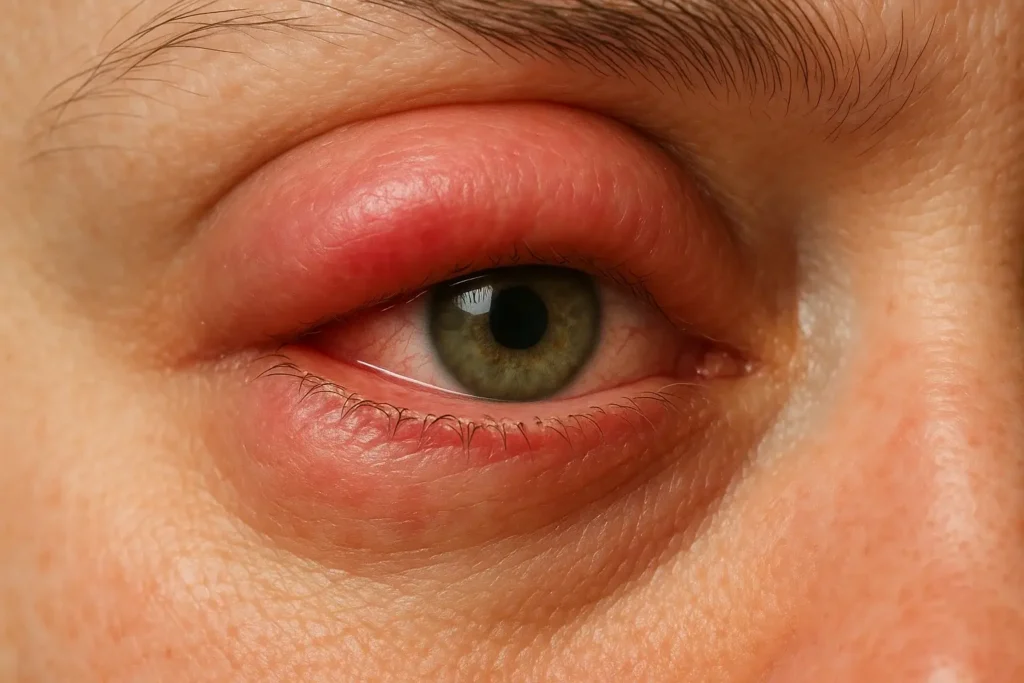
Common Causes of Pink Eye
Understanding what causes pink eye helps you recognize what you see in the mirror.
Viral Conjunctivitis
The most common and contagious type. It often comes with a cold or upper respiratory infection.
Bacterial Conjunctivitis
Usually, it results in a goopy discharge. This version can affect one or both eyes and needs antibiotic drops.
Allergic Conjunctivitis
Triggered by allergens like pollen or pet dander. This type is not contagious and usually comes with other allergy symptoms like sneezing.
Irritant-Induced Pink Eye
This can come from smoke, chlorine, or even shampoo. It clears up once the irritant is removed.
Symptoms of Pink Eye
Redness in the White of the Eye
It’s not called pink eye for nothing. The whites of the eyes turn pink or reddish due to inflammation of the conjunctivae.
Itchiness and Burning Sensation
If your eyes feel on fire or you want to scratch them out, that’s a big red flag.
Watery or Pus-like Discharge
Viral infections typically cause clear, watery discharge; bacterial infections? Thick, yellow-green goo.
Crust Formation Around the Eye
Wake up with your eyelids glued shut? That crusty gunk is a classic bacterial pink eye sign.
Swelling and Puffy Eyelids
Inflammation can cause noticeable puffiness, especially in allergic or severe bacterial cases.
How Pink Looks in Different Types
Each form of pink eye has a slightly different appearance.
Viral Pink Appearance
- Clear, watery discharge
- Redness in one or both eyes
- It often starts in one eye and spreads
- It may come with cold or flu symptoms
Bacterial Pink Appearance
- Thick, yellow, or green discharge
- Crusty eyelids
- Redness and swelling
- It usually starts in one eye but can spread
Allergic Pink Eye Appearance
- Both eyes affected
- Intense itching
- Puffy eyelids
- Watery eyes with no discharge
How to Tell if It’s Pink or Something Else
Pink Eye vs Style
A stye is a red bump on the eyelid. It is often painful and localized, not spreading across the entire white of the eye.
Pink Eye vs Dry Eye
Dry eye irritates, but usually not with redness or discharge like conjunctivitis.
Pink Eye vs Eye Allergies
They look similar, but allergies don’t cause crusting or pus. Plus, they often hit both eyes at once.
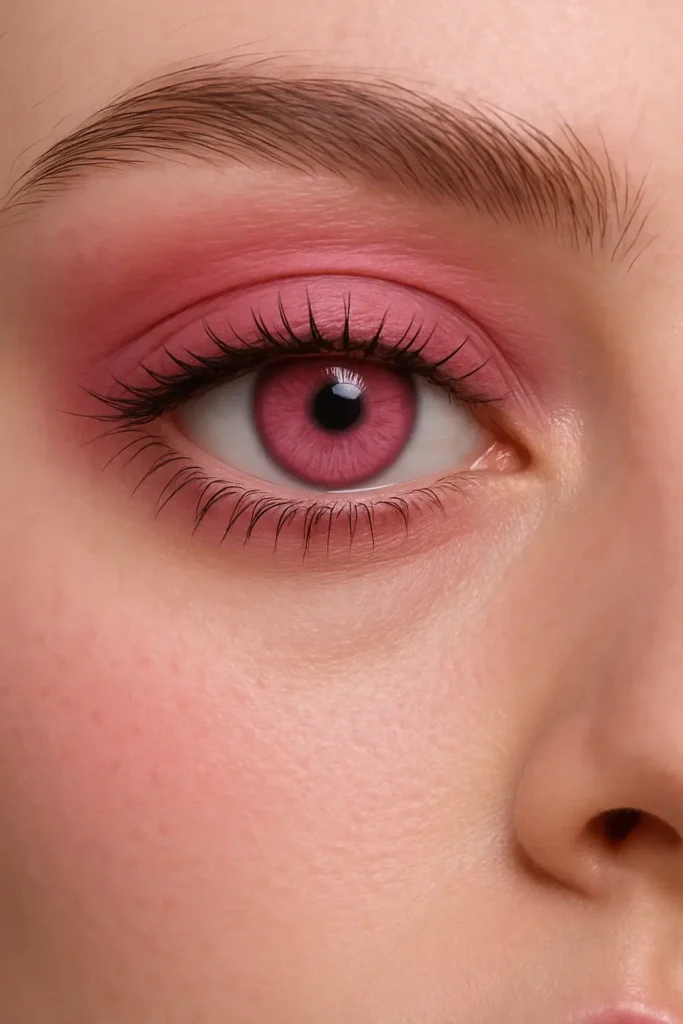
How Contagious is Pink Eye?
Spoiler alert: very. At least the viral and bacterial kinds are.
Transmission Methods
- Hand-to-eye contact
- Sharing towels, makeup, or pillows
- Coughing and sneezing (viral)
How Long Does It Stay Contagious
You’re contagious while symptoms are present, especially discharge. That can last 3 to 7 days (viral) or until 24 hours after starting antibiotics (bacterial).
Diagnosis: When to See a Doctor
Call a doctor if your symptoms last over a few days or worsen, or if you experience eye pain or blurred vision. Kids and contact lens users should be extra cautious.
At-Home Remedies and Relief Tips
Warm Compress
It soothes irritation and helps loosen crusty gunk.
Cold Compress for Allergy-Based Pink Eye
Reduces itching and swelling.
Over-the-Counter Options
Artificial tears can rinse out allergens or dilute viral irritants.
Medical Treatments for Pink Eye
Antibiotics for Bacterial Infections
It is only valid for bacterial pinkeye and won’t help viral cases.
Antihistamines for Allergic Cases
Oral or eye-drop antihistamines relieve itching and swelling.
Lubricating Eye Drops
These help flush irritants from the eye and soothe dryness or burning.
How to Prevent Pink Eye
Good Hygiene Practices
- Wash hands often
- Avoid rubbing your eyes
Avoiding Shared Items
No sharing towels, washcloths, or eye makeup.
Cleanliness in Public Places
Disinfect high-touch surfaces and avoid close contact with infected people.
When Is Pink an Emergency?
Seek urgent care if you experience:
- Vision loss
- Severe eye pain
- Light sensitivity
- Symptoms lasting over a week without improvement
How Long Does Pink Last?
- Viral: 3–7 days, sometimes up to 2 weeks
- Bacterial: Clears up in 3–5 days with antibiotics
- Allergic: As long as you’re exposed to the allergen
Myths and Facts About Pink Eye
- Myth: Only kids get pinkeye. It’s false; adults get it, too.
- Myth: You can’t wear contacts with pink eye — True, and you shouldn’t.
- Myth: Antibiotics help all pink eyes. This is false; they only treat bacterial cases.
Conclusion
Pinkeye may be annoying, but it’s usually easy to spot and treat. The key is recognizing the symptoms early—redness, discharge, itchiness—and knowing what type you’re dealing with. Whether viral, bacterial, or allergic, taking quick action can prevent it from spreading and help you feel better quickly.
So, if your eye looks pink and feels funky, you now know what to look for and do next.
FAQs
1. What does the beginning of pinkeye look like?
It usually starts with redness, a gritty feeling, and maybe watery eyes. You might think you didn’t sleep well.
2. Can you have pinkeye in
only one eye?**
Yes! In most cases, especially viral and bacterial, they start in one eye but often spread to the other.
3. Is pink eye painful or just uncomfortable?
It’s primarily uncomfortable—itchy, burning, and gritty—but shouldn’t be seriously painful. If it is, see a doctor.
4. Can makeup cause pinkeye?
Yes. Old, expired, or shared eye makeup can introduce bacteria or irritants that cause pink eye.
5. Does pink eye always mean an infection?
Nope! Allergies and irritants can also cause it—those types aren’t contagious.
Please don’t forget to leave a review.
Explore more by joining me on Patreon.

